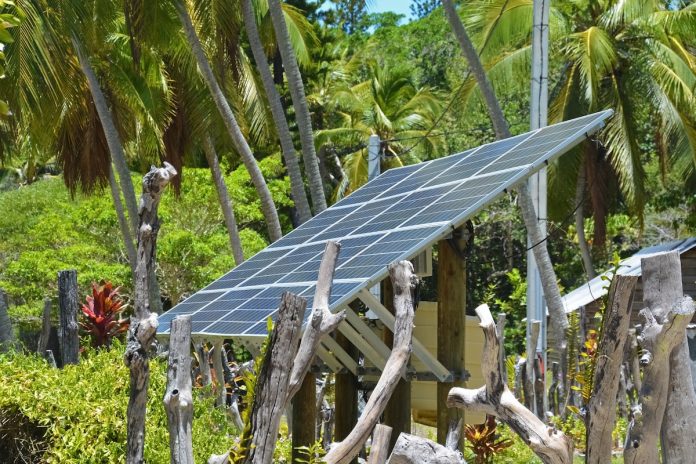How to Reduce Your Carbon Footprint
Wildfires. Droughts. Floods. It seems one can barely turn on the TV these days without hearing about the shocking impacts of global warming. Are we powerless in the face of impending doom? When it comes to the big picture, there isn’t much a single person or household can do to help maintain a liveable planet. But if everybody worked to reduce their carbon footprint, only think what a difference that could make. Of course, “everyone” isn’t yet prioritizing a healthy environment, but it has to start somewhere, and when it comes to your home and your family, it starts with you. So how to reduce your carbon footprint?- here’s what you need to know.
1. How Green is Your Home?
Solar companies in Iowa and around the state are experiencing huge demand for domestic solar installations. Choosing renewable energy isn’t just for “greenies,” with today’s efficient and much cheaper solar panels, it shouldn’t take many years for your solar system to pay for itself. After that, it’s savings all the way. Every megawatt hour of clean energy helps reduce pollution, increasing your home’s value while cutting electricity bills. It’s a neat, practical solution.
Your home must also be energy efficient. The better insulated it is, the less cooling you’ll need in summer and the less you’ll have to turn up the heat in winter. Once again, you’re saving costs while helping the environment. Consider commissioning an energy efficiency audit for your home.
Looking to save a whole lot of energy? Simply turn your water heater down to about 120˚F. Your water is still hot enough, and the element won’t turn on as frequently. You can also look at adding an insulating blanket to the water heater to boost your effort still further. It’s an easy, low-cost project that just about anyone can DIY.
Next up, it’s time to check out your kitchen and bathroom. Check appliances, especially older ones, to see whether they’re energy efficient. In the bathroom, you want to see low-flow plumbing fixtures in the shower and toilet. Water use contributes to your carbon footprint because it takes a lot of energy to purify and pump it. But it’s also a valuable resource, so checking your plumbing for efficiency, including testing for leaks, gives you a double-whammy.
Are you using LED light bulbs yet? Incandescents waste 9% of their energy, giving it off as heat instead of light. LED globes use about 25 percent of the energy and last as much as 25 times longer. So you save, and the environment benefits!

2. Greener Transportation
Driving less will help to reduce your carbon footprint. Because fewer cars on the roads mean better traffic flow, a community that explores alternatives can significantly reduce traffic congestion and gridlock. As usual, it starts with you. Walk or cycle when you can. Use public transport. Share rides. Have a well-maintained car. Even tire pressure makes a difference! Plan your errands and routes to do more things on every trip. When you drive, be gentle on the gas and brakes – you’ll reduce fuel consumption and emissions. Electric cars are a cleaner option, so plan for an EV when it’s time to replace your petrol or diesel car.
Flying is a thorny issue. When you need to fly, try to find nonstop flights since takeoff and landing produce heavy emissions. If you can afford it, purchase carbon offsets. Your money will go to reducing emissions elsewhere, and there are some worthwhile projects you can support.
3. Shopping for Clothes and Food
If you want to reduce your carbon footprint, buying fewer things will make a big difference. While everyone needs to eat and wear clothes, there are plenty of opportunities to soften their environmental impact.
When shopping for clothes, choose good quality items that won’t look dated in a few years. The average person in the US throws away up to 80 pounds of clothing a year, and 85 percent of that ends up in landfills, where it decomposes and produces methane. Cheap clothes made in the far east have journeyed a long way to reach you, and although the prices may be low, the carbon footprint is high – particularly if they’re not made to last. Sometimes, “dated” is stylish too! Vintage clothing is a great way to develop a signature style!
Stocking up on groceries? Don’t forget to bring your reusable shopping bags. Consider packaging critically. Choosing fruit from a bulk display means less packaging than buying it pre-packed in plastic or styrene containers. Plan your shopping list to include seasonal produce only. Out-of-season fruits and vegetables have a long, carbon-emitting journey to market – if you can support local farmers and produce markets, that’s even better!
The further down the food chain you eat, the better it is for a clean planet. Livestock production accounts for over 14 percent of greenhouse gas emissions. If you skip meat and dairy daily, you’ll save up to 8 pounds CO2. If you don’t feel ready for a vegetarian diet, designate certain days of the week as “meatless,” every bit helps!
Buying in bulk is another way to reduce packaging but beware of buying so much that you have to throw it away. Eliminating food waste that decomposes and produces methane will be a household project, but it’s worth the effort. Plan menus carefully, and use up any leftovers.
Whatever you buy, be it food or consumer goods, be sure it’s necessary, and look out for sustainable brands with third-party certification, even if that means paying a little more.

“More” Isn’t the Same as “Better”
We don’t have to look too far back to find people who lived comfortably with much less than modern consumers have grown to expect. Your grandparents or great-grandparents probably still belonged to a generation when nothing that could be mended, reused, or repurposed was ever thrown away, and out-of-season food was a rare luxury rather than an expectation.
In the interim, we’ve developed a consumer society that always wants more. But is it better? It certainly isn’t better for the generations that will succeed us. Since that means our kids and their children after them, making an effort to reduce our impact on environmental health is an investment in the future. All it takes is a little mindfulness and a willingness to act now.


